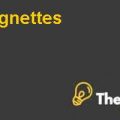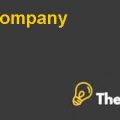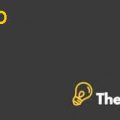
RATIOS TELL A STORY-2007
RATIO ANALYSIS
INTRODUCTION
The financial results and the financial performance of the companies vary due to many reasons. The pricing strategy, investment in property, plant & equipment (PP&E), management policies and management performance are some of the factors that influence the financial performance of the companies. This is the reason for which companies operating in the same industries, with same structure have different financial conditions at different points of time. These differences in the financial performance of the companies can be easily identified and interpreted through ratio analysis. Although ratios are based on historical results, nevertheless, they reveal important factors which might be the cause of the company not performing well or which might be hindering the company to perform best in its industry. Ratios help businesses to identify the relationships between different items on the balance sheet and measure those relationships to predict the performance of the company.
RATIO ANALYSIS
The most common ratios of 13 different companies have been presented in Exhibit 1. Each company belongs to a different industry. The ratios will help us to identify which company belongs to which industry.
- 1. Return On Sales (ROS):
A company’s operational efficiency can be evaluated by ROS. However, net income has been used in this case to calculate the return on sales. This indicates how much profitability has been generated by the sales of the company. Looking at the ratios of all 13 companies, it is evident that Company 2 has the highest ROS of around 23%. The goodwill of this company is around 38% of total assets which is also highest of all. This makes it clear that the company has maintained its goodwill and reputation in the eyes of its customer by providing valuable services. There is no inventory, so this is a company belonging to a service industry. A renowned software developer like Adobe fits in this case.
Company 3 also has low inventory, 25% of Goodwill of its total assets and also a good ROS of almost 17%. This might also be a company belonging to the service industry like the internet retailer, for example,EBay.Companies in the service industry have no inventories, higher profit margins and higher return on sales.
- 2. Asset Turnover:
This ratio tells how efficiently the assets of the company are being deployed to generate sales for the business. Generally, the higher is the ratio the better it is because the business is generating higher revenues. Company 4 has the higher asset turnover ratio of 3.2 times. It also has no inventory again, it is evident that this company belongs to a service industry. It matches to specialized staffing services industry and the company that best fits here is Rotator staffing services Inc. Company 1 has the second highest asset turnover ratio.
- 3. Return on Assets (ROA):
This ratio is an indicator of how much return the company is generating on its assets. This number will vary across significantly among different industries. The capital intensity of the company can be identifiedthrough this ratio. It reveals that how efficient is the company in generating returns for the company. Company 4 has the highest ROA. As identified above this company belongs to the specialized staffing services industry such as Rotator Inc.The second highest ROA is of company 2 which belongs to the software development industry such as Adobe. Company 4 has 73% of current assets and 31% of current liabilities, giving a good current ratio. The company’s gross margin is also high of around 43%. Combining all these it is evident that the company’s operational efficiency and profitability is good and the company is managing its working capital very well which in turn increases its ROA.
4. Financial Leverage:
Financial leverage or simply the leverage ratio is an indicator of how the company is utilizing its borrowed funds. Companies that are highly levered may be at the risk of bankruptcy if they could not make timely payments of interest and principal. Higher levels of debt on the balance sheet might make it impossible for banks to grant further loans to the companies. However, it might not always have to be bad, for example, companies can avail tax advantages on their borrowed funds and can also increase the return for their shareholders. Looking at the ratios it is evident that company 11 has the highest financial leverage. The company might belong to an industry that usually holds a lot of debt on their balance sheets. The most suitable industry for this kind of nature is the Commercial banking industry. There is no inventory and the capital structure shows that the company has 92% of debt against 8% of equity. Banks usually have higher borrowings and deposits. Please also refer to excel sheet for explanation.
- Return On Equity (ROE):
This ratio is an indicator of how much profitability the company has generated by the money invested by the company’s shareholders...................
This is just a sample partial case solution. Please place the order on the website to order your own originally done case solution.
This brief case, the problems of students to review a number of corporate financial performance and to compare them with one of the thirteen industries listed for them.
This Darden study. "Hide
by Mark E. Haskins Source: Darden School of Business 4 pages. Publication Date: June 4, 2008. Prod. #: UV1138-PDF-ENG













